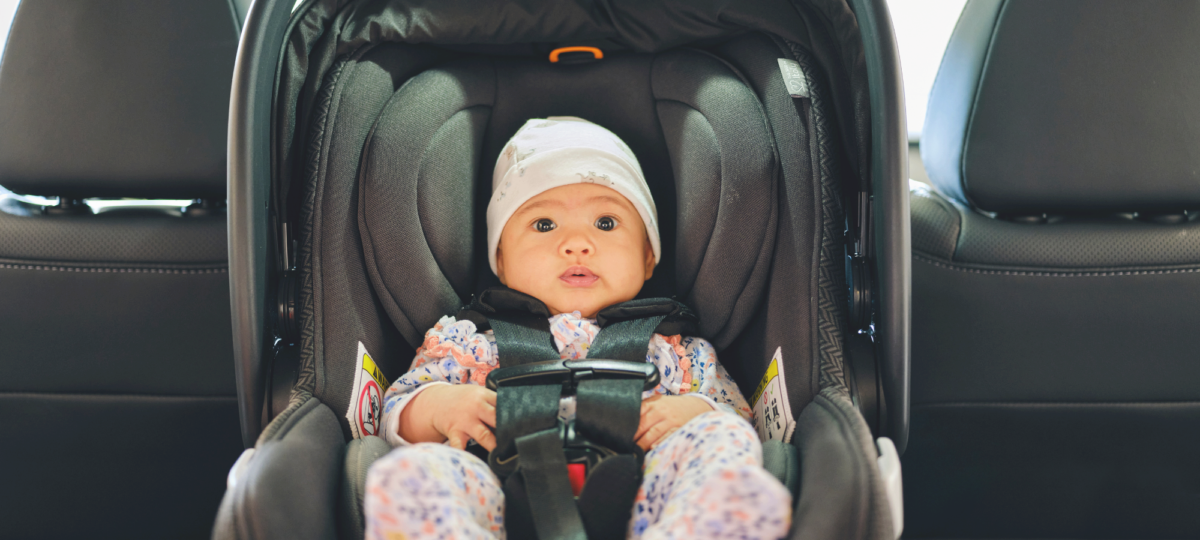For children under the age of 13, car accidents are the main cause of death. Unfortunately, many of these children were not seated in car seats or wearing seat belts during the wreck. Michigan car seat laws are designed to protect children from preventable injuries.
According to the National Safety Council, car seats reduce the chance of fatal injury by 71 to 82% for children. And compared to seatbelt use only, the risk of injury is reduced by 45% with the use of booster seats for children aged 4 to 8.
We never want to endanger our children, but not using the proper car seat can do just that. Understanding Michigan car seat laws makes every outing safer, whether you’re driving to a vacation destination or just running errands.
The regulations governing car seats and booster seats in Michigan are difficult, but hiring the appropriate lawyer is not. Contact Lipton Law if you’ve been charged with a car seat violation. We’ll advise you on how to move forward.
Michigan Booster Seat Law
Children under the age of 8, who are less than 4 feet 9 inches tall, must travel in a car seat or booster seat. That’s according to Michigan car seat legislation. However, if a child reaches the age of 8 or reaches or exceeds the height requirement, they no longer have to ride in them.
Seat belts or safety belts are required for all vehicle drivers, front-seat passengers, and any child passengers under the age of 16.
What Are the Laws Based On a Child’s Age in Michigan?

Different Michigan car seat laws apply to children of different ages.
The requirements for each age group are as follows:
Child Passengers Under 4 Years of Age
- A child under the age of four must be properly restrained in a child restraint system that complies with federal safety standards.
- If there is a rear seat, children less than 4 years old must ride in a rear seat.
- If all of the back seat space is taken up by child seats with other children under the age of four, a child under the age of four may be placed in their car seat in the front seat.
Child Passengers Aged Between 4 and 8 Years of Age
- Children aged 4 to 8, and who are smaller than 4 feet 9 inches in height, must be securely restrained in a child restraint system in accordance with instructions from the manufacturer and federal safety requirements.
Child Passengers Under 16 Years of Age
- Children under the age of 16, who no longer need to travel in a child restraint device, must wear safety belts.
- The safety belt requirement applies to children aged 4 to 8 who are taller than 4’9″ and children aged 8 to 16 who are taller than 4’9″.
- If a vehicle has more children than safety belts, children between 8 and 16 years of age must sit in the back seat. A child may sit in the front seat without a seat belt in a pickup truck that doesn’t have an extended cab or jump seat.
Child passengers 16 Years of Age and Older
Children aged 16 and older and the car’s driver must wear a seat belt in the front seat. There is no specific language regarding those aged 16 and older wearing safety belts in the back seat. However, it is safer to do so.
Where Don’t the Michigan Car Seat Laws Apply?
The rules don’t apply to motor vehicles that are not required under federal law or regulations to have seat belts. This includes taxis, buses, school buses, motorcycles, and mopeds.
Furthermore, the restrictions for children aged 4 to 16 years old do not apply to motor vehicles made before 1965.
Are There Other Exceptions to the Michigan Car Seat Laws?
For physical and/or medical reasons, there may be exceptions to the laws for all minor passengers.
Choosing the Right Car Seat

Car seats, booster seats, and restraints fall into four main categories with specific requirements based on age and size:
Rear-Facing Car Seats
Infants and toddlers should ride in rear-facing car seats for as long as it is safe for them to do so. This is until they reach the manufacturer’s height and weight limits. Check your owner’s manual to determine the requirements for your child’s safety seat.
Forward-Facing Car Seats
Children who are outgrowing their rear-facing seats can transition into forward-facing seats with harnesses. Use a forward-facing car seat as long as possible until your child reaches the maximum height and weight limits of the seat.
Booster Seats
Booster seats are used for children whose weight or height exceeds the forward-facing seat’s capacity. These seats are really helpful for children aged 4 to 8, who are too tall for a car seat, but not tall enough for correct seatbelt placement.
Seat Belts
Seat belts are worn by children who exceed their booster seat’s height and weight limit. In addition, seat belts are required for all drivers, front seat passengers, and anybody under the age of 16 no matter where they sit in the vehicle.
A physical or medical condition may prevent a child from using a car seat or booster seat. In this case, the parent may petition the Secretary of State for an exemption. The exemption keeps anyone driving the child from being penalized for not following Michigan car seat laws.
Michigan Car Seat Laws: Front or Rear Seat?

Michigan car seat laws dictate where children should sit in the vehicle based on their age and the number of other passengers.
Unless all available rear seats are filled by other children younger than 4, children under the age of four must ride in the back seat of the vehicle. Otherwise, a child less than 4 years old may ride in the front seat in a car seat.
Only if the airbag is switched off can a child in a rear-facing car seat ride in the front seat.
Back seat passengers aged 16 and up are not legally compelled to wear seat belts. However, research demonstrates that seat belts save lives and should be worn by everyone in the car, regardless of age or seat location.
Furthermore, the American Academy of Pediatrics advises that children under the age of 13 be seated in the rear seat and secured with the appropriate fastened belt. Make sure the airbag is turned off if they must ride in the front.
Installing A Seat
More than 70% of car seats are placed incorrectly, reducing their effectiveness to protect a child in the event of a car accident. Read your car seat manufacturer’s instructions as well as the vehicle owner’s manual before installing a car seat or booster.
Here are a few pointers:
- A seat should not shift more than 1 inch from side to side or front to back once it is secured.
- The chest clip should be positioned at the child’s armpits, while the harness straps should fit securely on the child’s torso.
- Rear-facing car seats should be placed so the child’s head does not fall forward in the seat.
Many local police stations, fire departments, and public health departments have trained personnel able to assist you with installing a car or booster seat.
A “child identification sticker” on the car seat or booster seat is also a good idea. In the event of a car accident, the sticker provides vital information about the child.
Avoid These Common Car Seat Mistakes
Car seats are designed to keep your child safe, but it’s surprisingly easy to make a mistake when installing or securing your child in one. In reality, many parents make the same mistakes over and over again without realizing it.
Loose straps and failing to secure the car seat in the vehicle are the most common installation errors. Harness straps should hug the child’s body tightly. The chest clip should be level with the child’s armpits. Tighten the vehicle seat’s seat belt until there is less than an inch of “wiggle room” from side to side and front to back.
Children should not be moved to a larger seat (or a booster seat for a seat belt) too soon. Wait until the child has outgrown their seat’s height or weight limits.
Avoid buying a second hand car seat if possible. Have it inspected by a car dealer or local police or fire personnel if you buy it used. In addition, any safety seat that has been in a collision should be replaced.
Secure seat belts across the hips and shoulders, rather than the stomach or neck, for children old enough to use them. Also, make sure the shoulder belt is worn across the chest rather than behind the back or tucked under an arm.

Visit your local police or fire station for assistance installing a car seat or selecting which type or size is best for your child.
Penalties
A person who violates the state’s child passenger safety requirements can be issued a ticket under the Michigan Vehicle Code, just like any other traffic violation. A violation is a civil offense, and fines for not having children in car seats begin at $65 per incident under car seat laws Michigan.
Car seats are not very expensive, and low-income Michigan families can receive free car seats through a Michigan State Police program.
Michigan Car Accident Injury Lawyers
When a child is injured in an accident, it can be especially traumatic for everyone involved because safeguarding our children is our top goal as parents. At Lipton Law Firm, we address your case with compassion and provide legal advice. We ensure your child receives the compensation they deserve for their injuries, whether they were caused by a motor vehicle collision or a defective car seat or booster seat.
If you have a car seat safety violation concern, you should contact a Michigan car accident attorney as quickly as possible. In the event of a lawsuit, a lawyer will advise you on your next steps and help you establish your case. Car seat infractions are significant, and corrective action should be taken right away to protect your child from future injury.
For more information or to get your case started, contact the Lipton Law Firm at 248-629-2747 for a no-obligation consultation.

